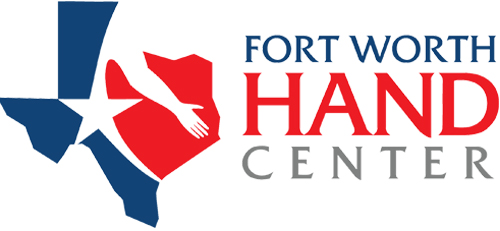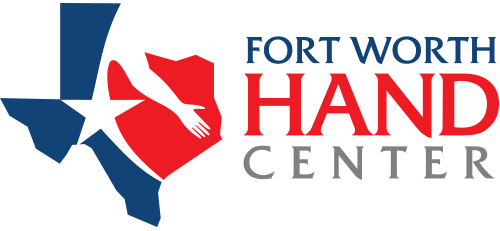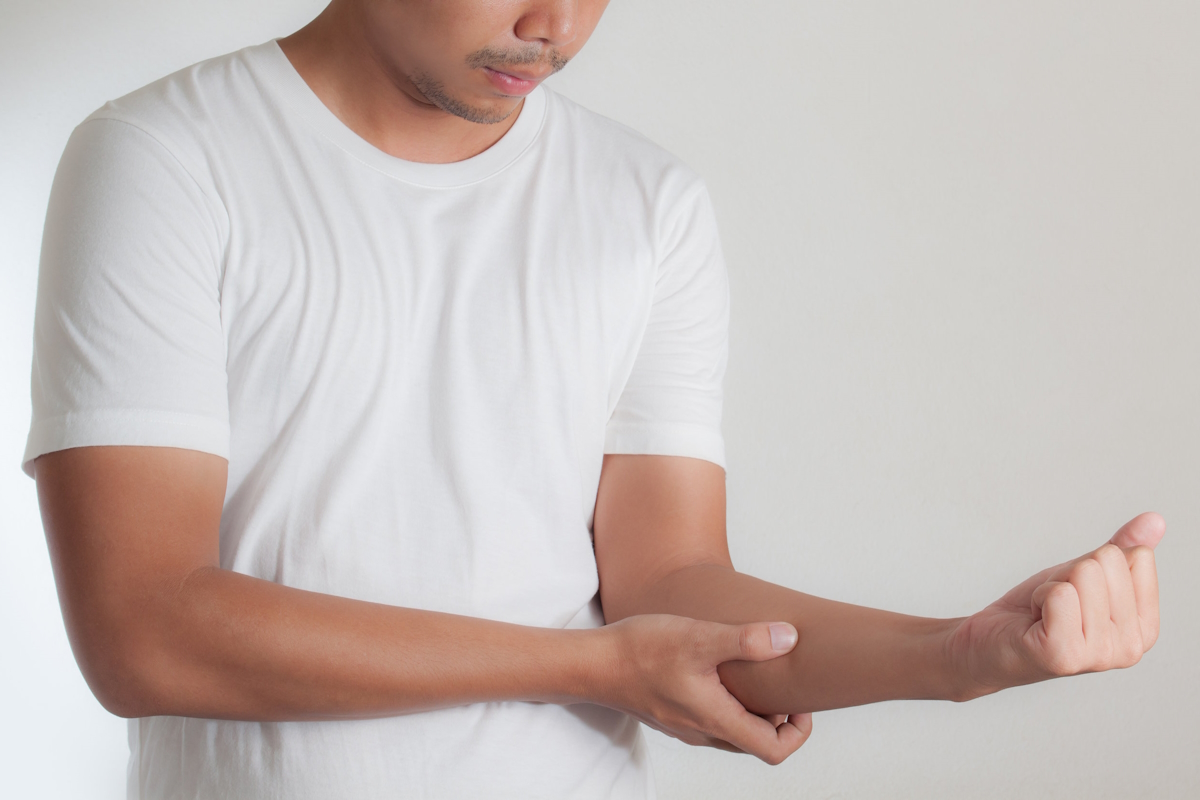Mitch* has been an avid bicyclist for the past year. Without fail, he gets up every Saturday morning before dawn with six or seven of his old college buddies and hits many of the nearby back roads for a fun but competitive ride. But lately, those long bike rides haven’t been as enjoyable because of tingling, pain, and numbness in his wrist that he can’t seem to shake out. Even more frustrating is that he can’t explain the phenomenon since there’s seemingly no specific cause, such as a fall or random injury. All he knows is that those sensations interfere with his weekend hobby, and he needs relief. After finally visiting the doctor, he was told he had what’s known as ulnar nerve entrapment.
The term “ulnar nerve entrapment” may sound alarming when you first hear it. After all, any injury that’s given an official name must be serious—and potentially permanent. The good news is that these types of injuries are highly treatable with physical therapy, medications, and splints in most cases. In chronic cases, your doctor may recommend surgery. The trick is to visit an orthopedic surgeon quickly for an accurate diagnosis.
Do any of these symptoms sound familiar?
- Weakness or tenderness in the hand and/or elbow joint
- Tingling in the palm and pinky and ring fingers
- Weak grip strength
- Sensitivity to cold
- Muscle loss in your ring or pinky fingers
What Causes Ulnar Nerve Entrapment?

Ulnar nerve entrapment goes by several names. This includes cubital tunnel syndrome, Guyon’s canal syndrome, Tardy ulnar palsy, bicycler’s neuropathy, or handlebar palsy. Essentially, the condition occurs when the ulnar nerve, which travels down the back and inside of the arm to the hand, becomes compressed or pinched as it passes through the wrist or elbow. This particular nerve is responsible for transmitting electrical signals to muscles in the forearm and hand and also creates sensation in the ring and pinky fingers, your palm, and the underside of the forearm.
Ulnar nerve entrapment is the second most common nerve entrapment after carpal tunnel syndrome, affecting approximately 10% of the population. Ulnar nerve entrapment is more prevalent in males than females, with a male-to-female ratio of 2:1.
So you’re probably wondering, “How does the ulnar nerve become compressed or trapped?” In Mitch’s case, leaning forward on his bike’s handlebars for prolonged periods meant placing constant pressure on his wrists—sometimes for as many as 10 or 12 miles each ride. As a result, the feeling felt like his wrists were “falling asleep.”
Bicyclists are commonly impacted by ulnar nerve entrapment. So are baseball players, golfers, tennis players, writers, weightlifters, and construction workers, to name a few. Basically, any activity that causes prolonged stretching or compression of this nerve can lead to ulnar nerve entrapment. A few of these common activities can include:
- Prolonged use of hand tools
- Long-term pressure on the elbow or base of the palm
- Excessive elbow flexion, such as cigarette smoking
- Pressure from using crutches
- Overuse injuries and trauma
- Arthritis
- Surgical complications

Can Ulnar Nerve Entrapment Heal On Its Own?
Yes. The symptoms of ulnar nerve entrapment can come and go, and many people experience long-term relief by avoiding or simply taking a break from whichever activity is exacerbating their symptoms. Beyond rest, many cases of ulnar nerve entrapment can be treated with medication, splints, and physical therapy.
The key is recognizing that something is wrong and seeking help from an orthopedic surgeon if symptoms do not improve or resolve themselves within a few days. Your doctor will perform a physical examination and ask you to try performing a series of movements to see how your injury responds. From there, they may also order an MRI or ultrasound to gauge how your muscles and nerves are functioning in that area. These imaging tests are also helpful in ruling out any abnormalities such as cysts, deformities, etc.
If you have a severe case of ulnar nerve entrapment, surgery may deliver the best results. Surgical release has a success rate of around 80-90% in relieving symptoms. If the pain emanates from your elbow, the surgeon will make a small incision and either decompress the nerve or reposition it in the inner part of the arm. If it’s a wrist issue, a similar incision will be made at that location to decompress the nerve.
Regardless of whether your treatment options are conservative or not, most patients experience quality outcomes.

Experiencing Ulnar Nerve Entrapment? Fort Worth Hand Center Can Help
Ulnar nerve entrapment is a condition that could be short-lived for many people. It can also be debilitating if the symptoms don’t improve within a few hours or days and aren’t treated properly by a qualified orthopedic surgeon.
From the fingertips to the elbow, the Fort Worth Hand Center physicians treat everything from sports injuries and joint replacement to chronic conditions, age-related complications, and trauma. Whether traditional surgery or non-surgical techniques, our expert doctors will thoroughly explain all your options and get you back to your favorite activities.
Some of the best orthopedic surgeons in Fort Worth are at Fort Worth Hand Center, as evident by the practice reviews. We’re ready to help you today. To schedule an appointment, call 817-877-3277 or complete the form below. Everyone is welcome at Fort Worth Hand Center!
This information is not a substitute for professional medical advice. Prior to starting any new treatment or if you have questions regarding a medical condition, always seek the advice of your doctor or other qualified health provider.
Fort Worth Hand Center serves the DFW area, including Fort Worth, Grand Prairie, Grapevine, Haltom City, Haslet, Hurst, Keller, Kennedale, Lakeside, Lake Worth, Mansfield, Newark, North Richland Hills, Pantego, Pelican Bay, Richland Hills, River Oaks, Saginaw, Sansom Park, Southlake, Trophy Club, Watauga, Westlake, Westover Hills, Westworth Village, White Settlement, Arlington, Azle, Bedford, Benbrook, Blue Mound, Burleson, Colleyville, Crowley, Dallas, Dalworthington Gardens, Edgecliff Village, Euless, Everman, Flower Mound, Forest Hill, and all of North Texas.
*Patient stories are true. Names and/or photos may be changed to protect patient confidentiality.



